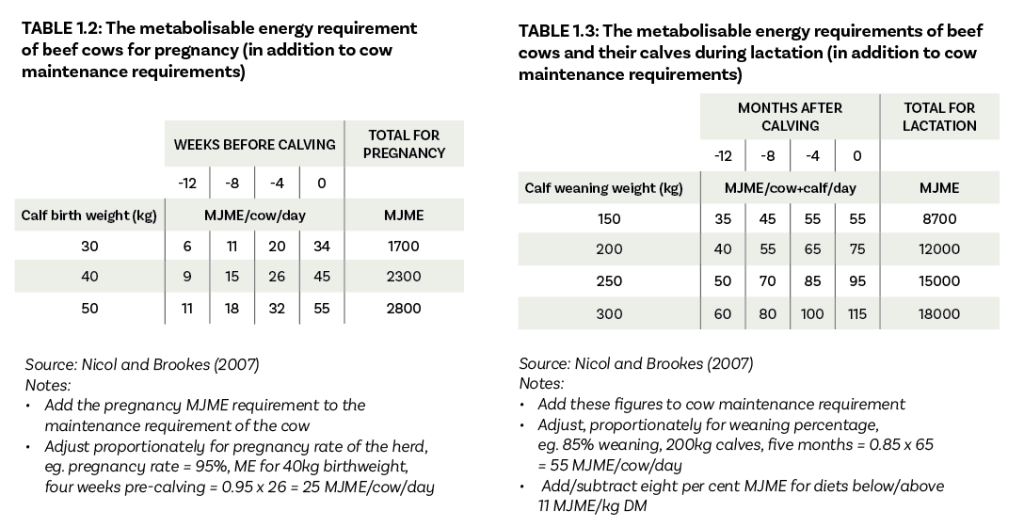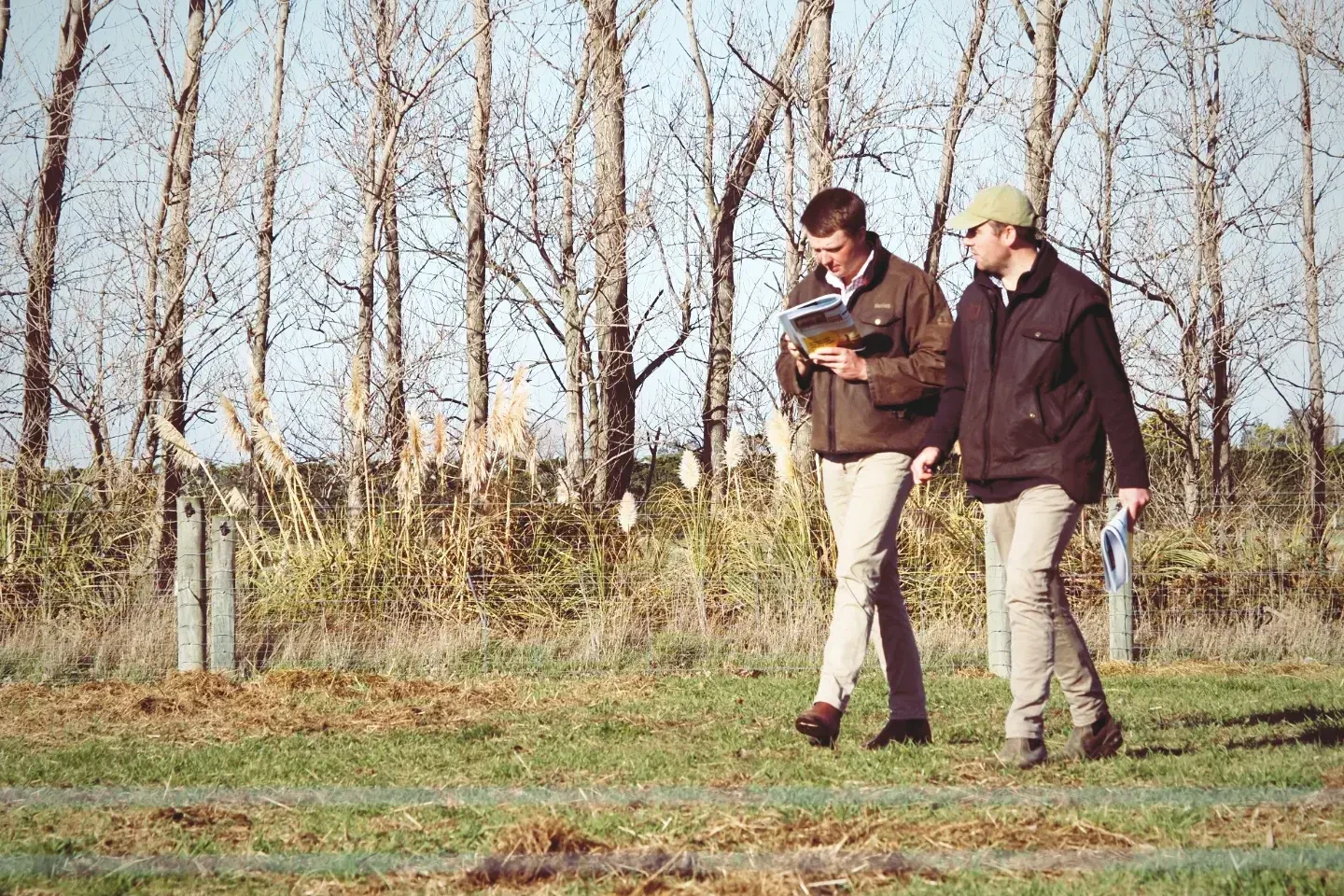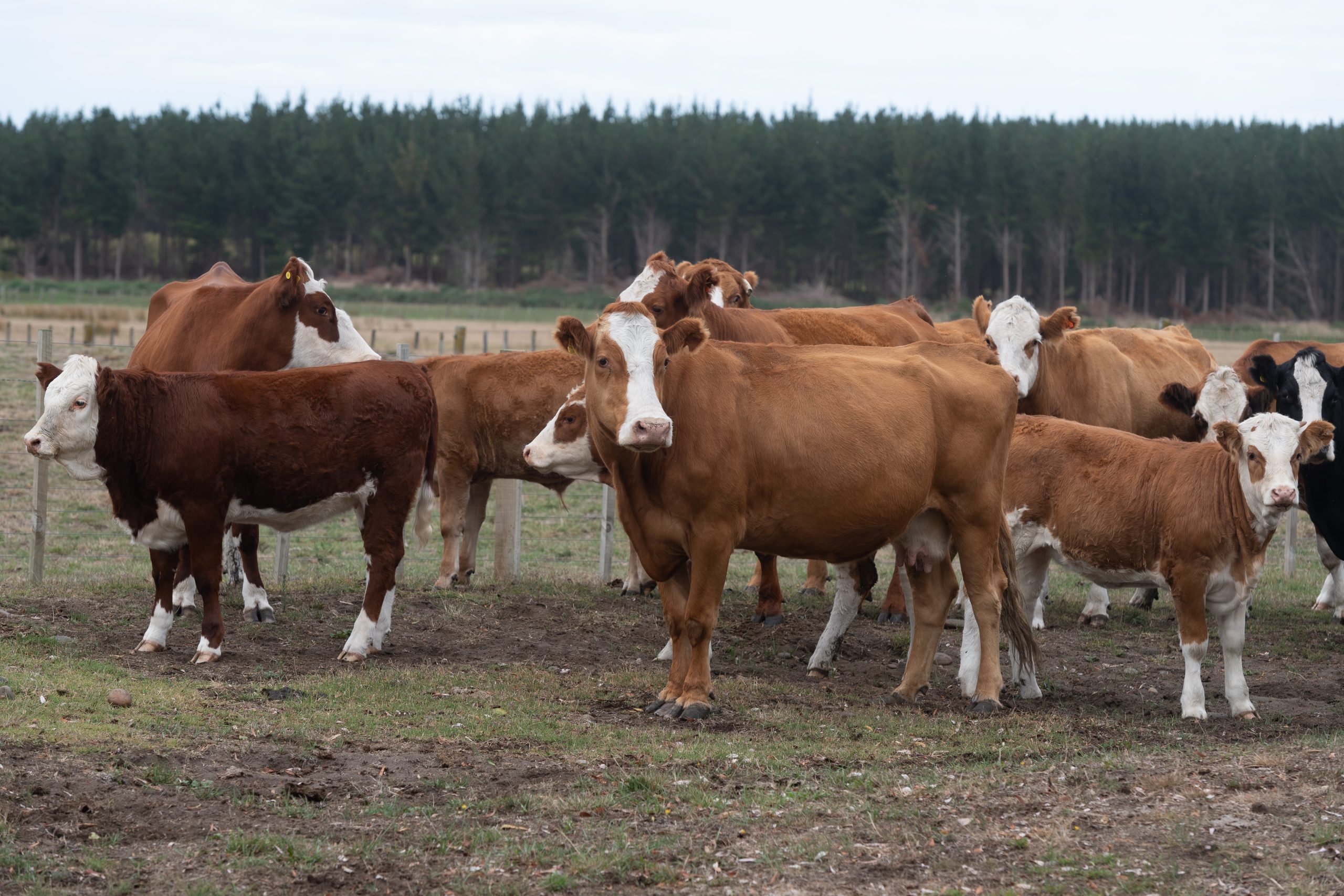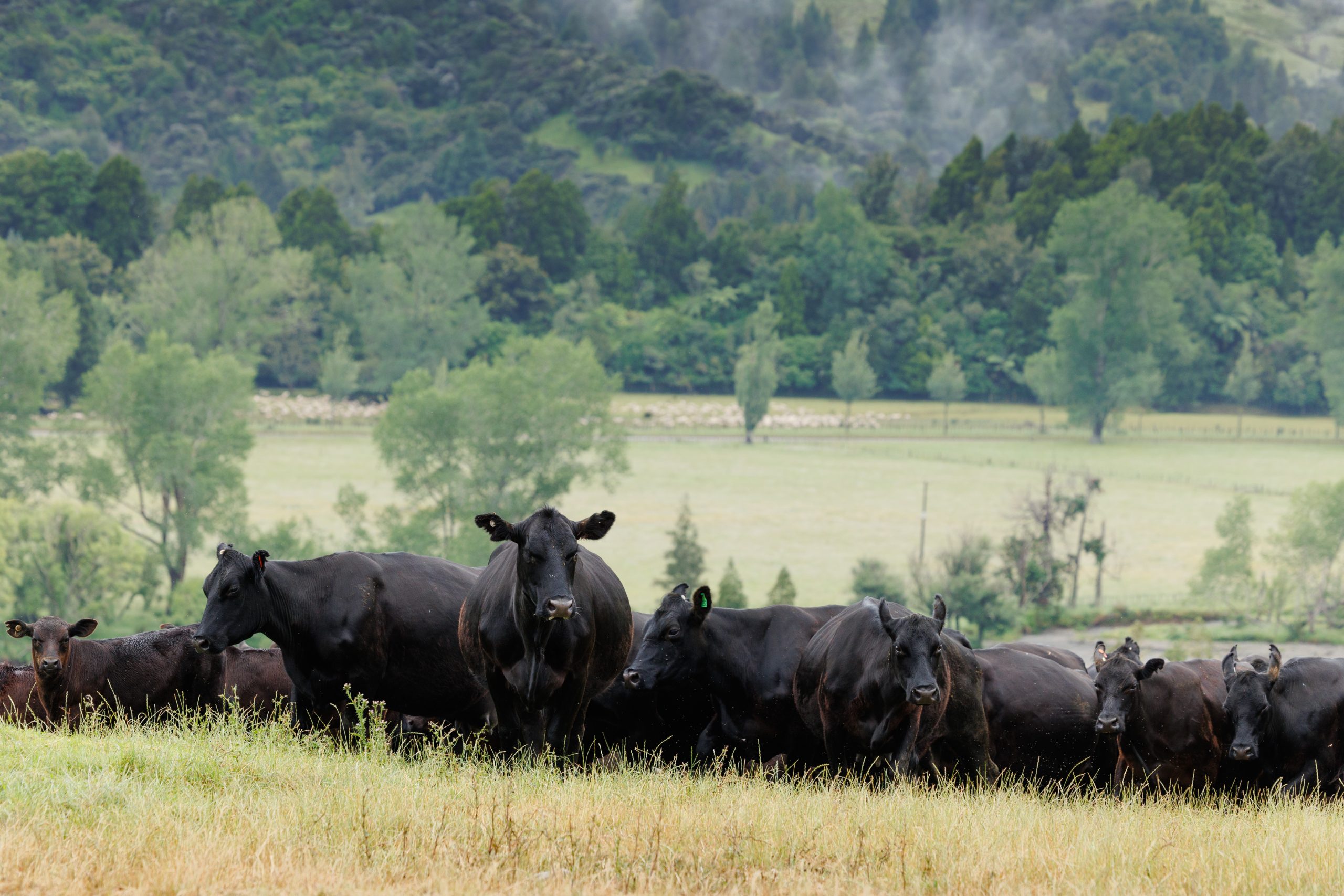Energy requirements of cattle at different stages
Every 100kg increase in liveweight requires an additional 11 megajoules of metabolisable energy a day. Words Beef + Lamb New Zealand.

Feed requirements represent the amount of feed which must be consumed to sustain a defined level of production. For any specified level of performance (for example, pregnancy, liveweight gain or milk production), sufficient nutrients and energy must be supplied to the animal tissues to meet metabolic demands. These requirements can be conveniently expressed as metabolisable energy (ME) because with most pastures, energy is the most limiting factor for a given level of production.
Other nutrients such as protein, minerals and vitamins are almost always present in adequate amounts, except where there is a known deficiency. However, protein may be limiting in some instances – for example, young growing animals – especially on low digestible, mature type pastures. In calculating feed requirements for cattle, the requirements for maintenance, liveweight gain, milk production, and pregnancy are estimated separately and then added together.
REQUIREMENTS FOR MAINTENANCE
The ME requirement for maintenance is the amount of ME that must be supplied to provide energy needed for essential body functions. If this energy is not supplied in the diet, it must be obtained by mobilising body tissue, predominantly fat.
As liveweight increases, so too does maintenance energy requirement (refer to table 1.1). Every 100kg increase in liveweight requires an additional 11 megajoules of ME a day. Increased grazing and activity on hard hill country incurs significant costs.
 REQUIREMENTS FOR PREGNANCY
REQUIREMENTS FOR PREGNANCY
The amount of energy used for both maintenance and growth of the foetus and the products of conception depends on:
- Days from conception – the greatest increase in requirements occur in the last trimester of pregnancy.
- Number of offspring – twins rarely exceed one per cent of births in beef cattle.
- Size of the foetus.
Guideline requirements for pregnancy for calves of varying birth weights are shown in Table 1.2. These values are additional to the maintenance requirements of the cow.
 REQUIREMENTS FOR LACTATION AND CALF GROWTH
REQUIREMENTS FOR LACTATION AND CALF GROWTH
The ME requirement for milk production depends on:
- Total milk yield (litres)
- Milk composition – because milk varies in concentration of fat, protein and lactose, the ME requirement per litre will also vary.
It is extremely difficult to know the milk production of beef cows but it will usually range from 5–10 litres a day for single-suckled cows. In addition and as a guideline, 5.8 MJME/kg milk is assumed.
The costs of lactation and calf growth (Table 1.3) are estimated as 60 MJME/kg calf weaning weight (slightly less for very light calves). Assumptions have been made about the proportion of the calf’s requirements supplied by milk and grazing. However, this ratio does not markedly affect the total ME requirements for calf growth to weaning.
To learn more visit the Beef + Lamb NZ Knowledge Hub go to beeflambnz.com




